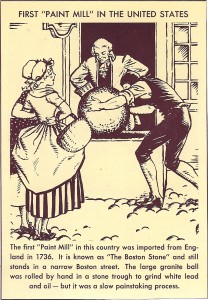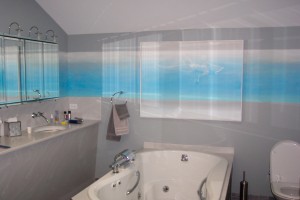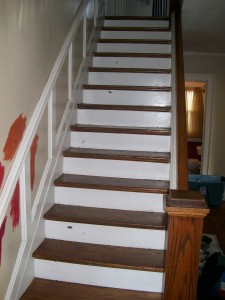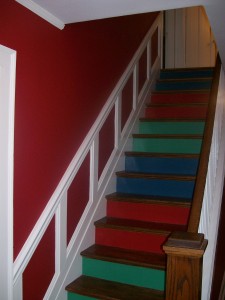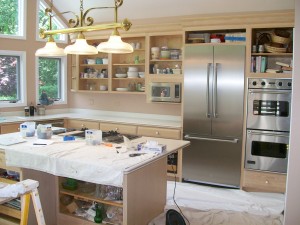Paint restoration sometimes involves the replacement of rotten wood before any painting can be done. As shown on the picture below, the front porch had deteriorated very substantially. The owners agreed to take that opportunity and redesign the porch to make it more consistent with the period of the house.
Most of the floor support beams were preserved, along with two third of the floor boards. The rest had to be replaced. When we work on a vintage house, every effort is made to preserve as much of the original materials as we can. Pressure-treated wood, along with cedar, was used in re-building the porch.
Painting in Partnership’s paint color consultation service also played a key role on this project. The owners love color! We recently painted the interior of their house in vivid “period” colors. The front porch and façade of the house had to make a similar statement to what they had made with their interior house painting project. The result was a beautiful five-color porch!
We used dark purple on the porch floor and the shingles on the porch gable. The shutters were also repainted in the same purple color. We stained the shingles on the porch surround a rusty red color to create balance with the rusty color roof. We used two shades of green for the front door and other porch elements. Finally, the spindles were painted the same color as the siding.
At Painting in Partnership, we believe that a little color can go a long way to create excitement for house painting project and the people involved.







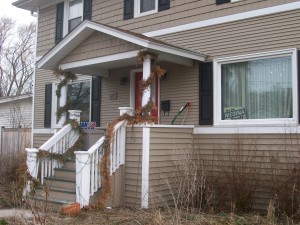
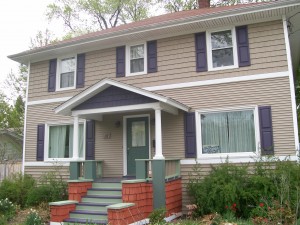
 Follow
Follow

